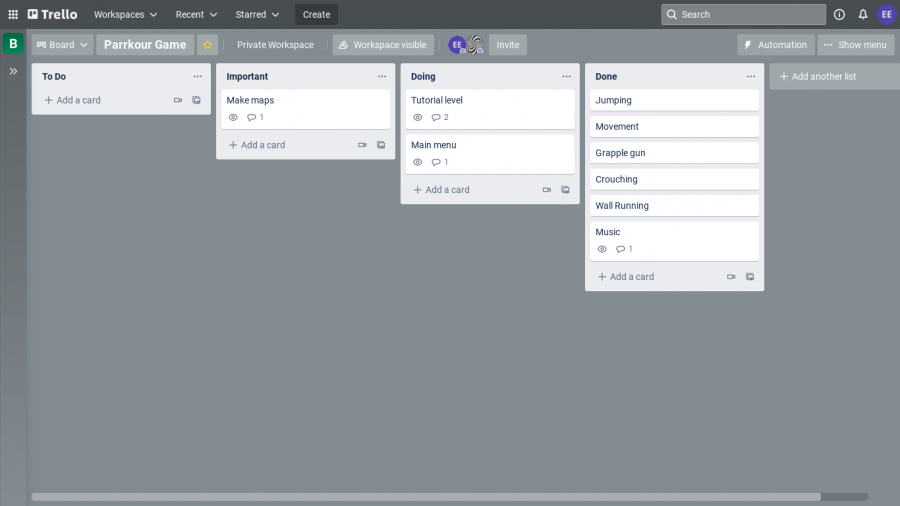The Hidden Side of Video Games
October 7, 2021
This may not have ever occurred to you, but all the games you love to play, Call of Duty, Minecraft, Rocket League, all of them took teams of developers, months, and most of the time years to create. Do you know how they were created?
I interviewed Ben Olex, an indie game developer who develops for Windows 10, android, and sometimes VR. We discussed his process for making games. He told me that on average, “It usually takes between a week, to a year to develop a game.” Although he also said it would probably take more time to develop a bigger game than what he currently makes. The hardest part of game development according to Olex is, “fixing all the bugs.”
The applications Olex uses are Unity Game Engine, Visual Studios, and Trello, he also uses Blender 3d. Unity is the Game engine he uses, it is what runs the behind-the-scenes code and graphics. Visual Studios is a code editor that Olex uses to type all of his scripts, and Trello is a graphic organizer that makes it easy to plan his project. Finally, Blender is a 3d modeling and animation program.
The long process starts by brainstorming ideas for games and how their levels and/or story and characters may look. Olex then writes those ideas down on a piece of paper. After he puts those ideas into a trello.com organizer (see image.) He then starts to get the basic functions of the game in place, such as player and camera movement among other things.
After he has the basic functions in place, he starts doing the 3D modeling of his characters and objects in the game, for that he uses Blender 3d. Once Olex finishes modeling, he imports the models and adds them to the game.
Finally, he starts making levels/maps for the game. He does this mostly in Unity, but also in Blender, he will form landscapes, and place most of the small details like plants and animals by hand. He is careful to make sure that the maps/levels follow the story or gameplay style. Once he has made the maps and characters, he gets ready to publish.
When publishing he will first take an image for the game icon, then he will come up with a title, he will apply the title to the main menu and project name. Once he is done he exports the game, and uploads it to Itch.io an indie game distribution site similar to Steam. When he uploads the game, he types up a small description then imports a couple of screenshots, and just like he is finished.

joe bidon • Oct 14, 2021 at 12:57 pm
ben is epic at coding games
19 dollar fortnite card man • Oct 13, 2021 at 2:42 pm
I really like this article because I’ve been wanting to be a game developer for a long time and this could help me see what I could be facing if I do ever become a game developer!
dylan seror • Oct 13, 2021 at 1:12 pm
it was really interesting to read about this process, well done.
Julian • Oct 13, 2021 at 11:24 am
This is very interesting. I’ve been wanting to be a game developer for a long time and this seems complicated. But overall this article is very good! It helps me what I’m going to face if I do ever become a game developer!